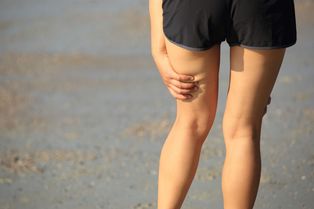
Tight hamstring muscles are well known and most of the time it does not lead to a problem. However, they may be more prone to stress or play some roles in the occurrence of other problems such as back pain and postural problems. Tight hamstrings indicate that you find it very difficult to engage in physical activities and compete in full capacity because the muscles are not completely healthy.
Tight hamstrings can be more susceptible to strain and tearing. There is also a difference between tightness and injury. In the event that you experience pain in your finger hamstring, it is best to consult a physician before attempting to treat the injury at home.
There are various exercises and stretches which you can do which will assist you in keeping your hamstring loose. Before stretching, it is advisable to warm up your muscles. Try to walk or does some other activity to keep the muscles warm up.
Care must be taken never to stretch when you are in pain or try to force a stretch. Inhale normally during physical exercises that involve stretching. Try to bring in hamstring stretches into your daily activities at least two or three days a week.
What are the Causes of Tight Hamstrings?
1. Do not stretch before or after the activity - When the muscles are warm after the activity, it is very important that they stretch properly to prevent the muscles from tightening until they are cool.
2. An extended sitting time during work - Hamstring muscles which contract for a long period of time has been found to lose flexibility easily.
3. Genetics – another cause of tight hamstring is genetics as some people, mostly men, were born with a short hamstring.
4. Lower Back Problems - Pressure on the sciatic nerve that passes down to the back of the leg, can result in tightening of the hamstring.
5. Living an Inactive lifestyle – when you are inactive and sitting for a long period of time can make the hamstring to lose its flexibility.
What are the Symptoms of Tight Hamstrings?
In the case of a tight hamstring, there are few symptoms, however; there may be some physical indications that indicate that you have tight hamstring muscles. Below are some of the symptoms of tight hamstrings:
• Bad posture.
• Finding it difficult to keep your legs straight while bending at the hips.
• You experience pain in the buttock while sitting.
Tight Hamstrings Treatment
Treatment for Tight Hamstrings requires restoring the circulation and blood flow to the affected structures in your hamstring. Pain is caused when swelling, inflammation and decreased circulation generate a blockage, which causes blood flow to be interrupted or slowed. Treatment for this issue requires breaking up the accumulated fluids in your hamstring to allow for improved healing and quicker recovery.
Products recommended for symptoms of swelling, redness, pain, and inflammation, and if coolness makes your pain feel better:
Ice Substitute Poultice
Bruise Relief Liniment
Muscle Therapy Massage Oil
Products recommended when swelling and inflammation are gone, but you still feel pain, stiffness, weakness, and/or sensitivity in cold and damp weather, and if heat makes your pain feel better:
Pain Relief Liniment
Muscle Therapy Massage Oil





